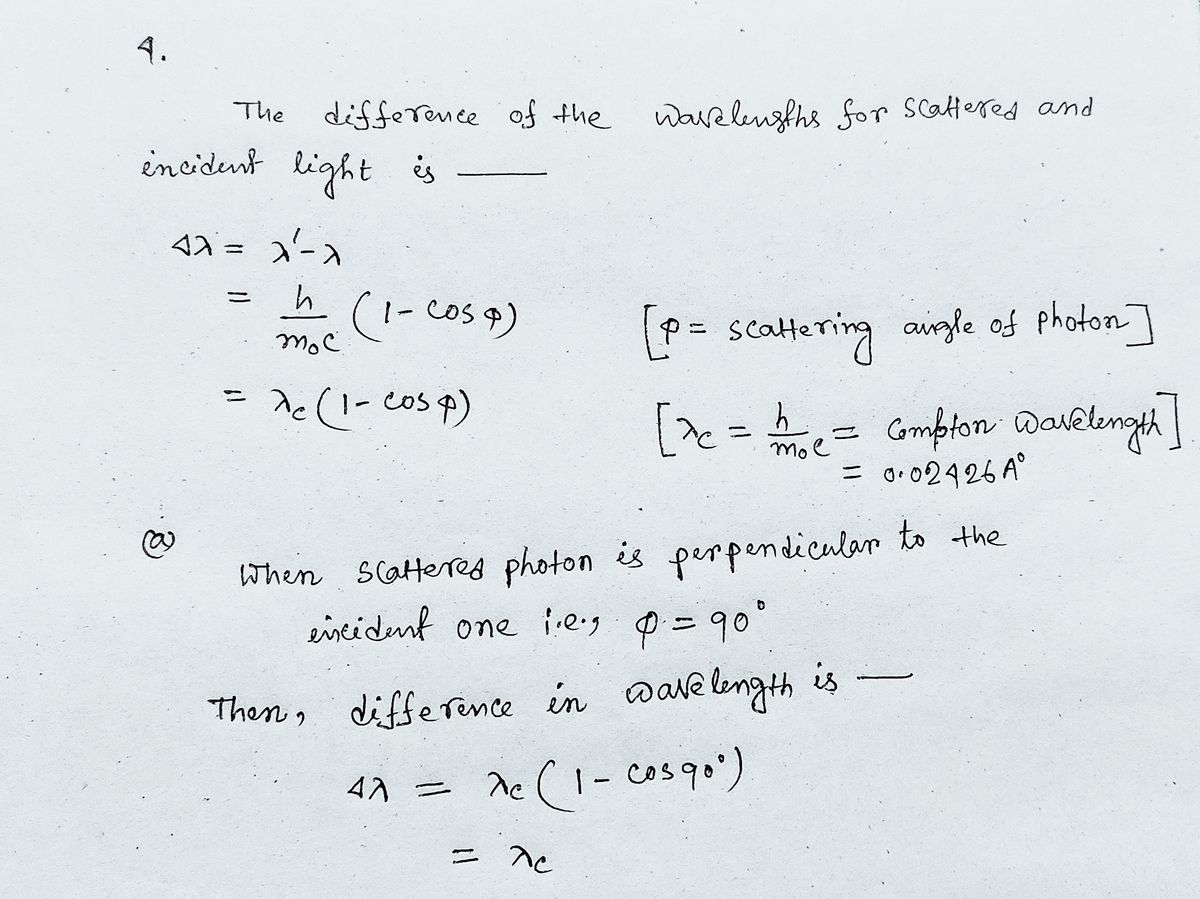4) Consider the Compton effect, write down the formula giving the difference of the wavelengths for scattered and incident light in terms of the scattering angle of the photon and the Compton wavelength. a) What is the difference in the wavelengths if the scattered photon is perpendicular to the incident one? b) Calculate the absolute maximum and minimum of the difference in the wavelengths. (Hint: take the derivative of the r.h.s. w.r.t. the angle and set it equal to zero) c) In all 3 cases find the angle the scattered electron makes with respect to the horizontal.
4) Consider the Compton effect, write down the formula giving the difference of the wavelengths for scattered and incident light in terms of the scattering angle of the photon and the Compton wavelength. a) What is the difference in the wavelengths if the scattered photon is perpendicular to the incident one? b) Calculate the absolute maximum and minimum of the difference in the wavelengths. (Hint: take the derivative of the r.h.s. w.r.t. the angle and set it equal to zero) c) In all 3 cases find the angle the scattered electron makes with respect to the horizontal.
Related questions
Question

Transcribed Image Text:4) Consider the Compton effect, write down the formula giving the difference of the
wavelengths for scattered and incident light in terms of the scattering angle of the
photon and the Compton wavelength.
a) What is the difference in the wavelengths if the scattered photon is perpendicular to
the incident one?
b)
Calculate the absolute maximum and minimum of the difference in the wavelengths.
(Hint: take the derivative of the r.h.s. w.r.t. the angle and set it equal to zero)
c) In all 3 cases find the angle the scattered electron makes with respect to the
horizontal.
Expert Solution
Step 1

Step by step
Solved in 4 steps with 4 images
